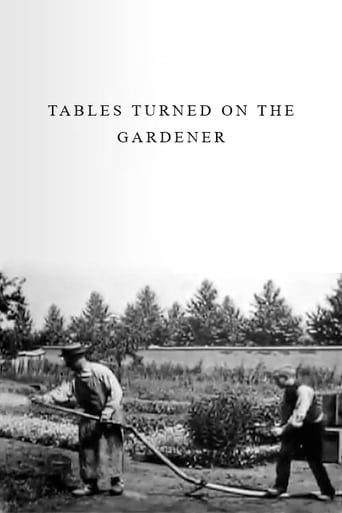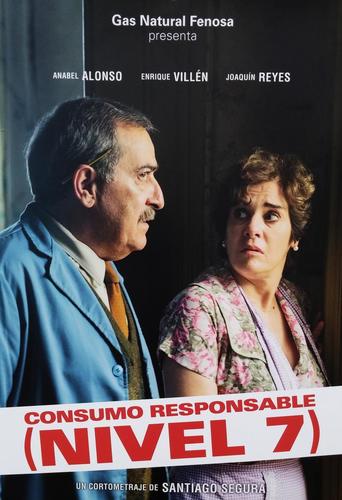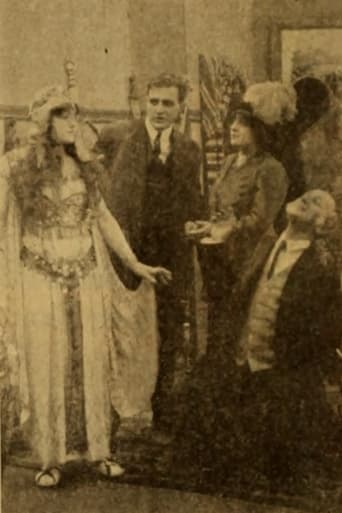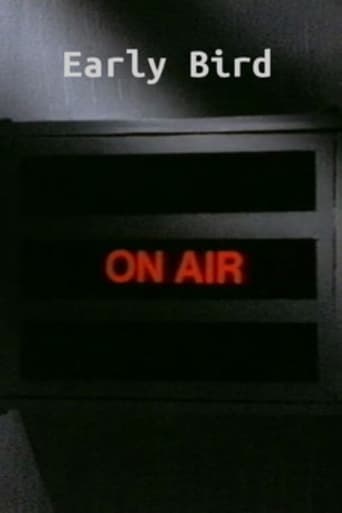

The Sprinkler Sprinkled (1895)
A gardener is watering his flowers, when a mischievous boy sneaks up behind his back, and puts a foot on the water hose. The gardener is surprised and looks into the nozzle to find out why the water has stopped coming. The boy then lifts his foot from the hose, whereby the water squirts up in the gardener's face. The gardener chases the boy, grips his ear and slaps him in his buttocks. The boy then runs away and the gardener continues his watering. Three separate versions of this film exist, this is the original, filmed by Louis Lumière.
Watch Trailer
Cast


Similar titles
Reviews
Excellent but underrated film
A lot more amusing than I thought it would be.
I wanted to like it more than I actually did... But much of the humor totally escaped me and I walked out only mildly impressed.
A great movie, one of the best of this year. There was a bit of confusion at one point in the plot, but nothing serious.
L'arroseur arrosé was one of 10 films included in the Lumière brothers' historic first presentation of projected moving images to a paying public in Paris in December 1895, but it's radically different from the rest of the programme. Most of the films are documentary records of everyday activity, and while there's an element of staging to some of them, including some professional entertainers and party tricks, none seem to have been mounted to take specific advantage of the new medium — except this one. It's often described as the first known fictional film and the first known comedy film to be exhibited theatrically.The gag is simple and now seems well worn, but it's no doubt still capable of making children laugh when they encounter it for the first time. A gardener, played by the director's own gardener, is watering with a hose. A mischievous youth stands on the hose to block it, releasing his foot just as the gardener peers down the hose to investigate, with, as they say, hilarious consequences. As with much comedy, part of the pleasure is in observing the discomfort of others — the victim's drenching, the mischief maker's subsequent corporal punishment.Like all the early Lumière films the action is presented as a single long shot and it's interesting to compare how the scenario might be treated today — perhaps an establishing shot, a cut to the miscreant approaching, a cut back to confirm the gardener's lack of awareness, and closeups of the foot on the hose so the audience is clear what is going on, and of the gardener's face as it's hosed for maximum Schadenfreude.It's doubtful that contemporary audiences appreciated the film's distinctiveness and of course they would have had no idea how much it presaged what was to come. Given that the film appeared alongside single shot depictions of homebound factory workers, photography conference delegates disembarking from a boat trip and passers-by on a Lyon square, they might well have assumed that the camera fortuitously happened to be rolling as the incident played out spontaneously
In the earliest motion picture experiments, such as those by Louis Le Prince, William K.L. Dickson and others, the novelty of reproduced motion was of satisfactory interest. From the beginning of commercial exhibition, however, filmmakers staged scenes, events, or stories, to create further interest and entertainment. Although even in the earliest experiments, the filmmaker usually staged events for the camera, the intent wasn't intrinsically for entertainment. Magic lantern slides and other precursors to motion pictures already included elaborate stories in their programs, and Emil Reynaud projected animation stories to audiences near the end of the 19th Century. To point to a precise film as the beginning of stories in the art form is a futile task.Even slightly before this film, "The Sprayer Sprayed", the Edison Company's "Blacksmith Scene", for example, was a fictional, staged recreation. "The Execution of Mary, Queen of Scots" or "Chinese Laundry Scene" weren't actualities or mere examples of reproduced motion, either. The latter was even comedic. Nonetheless, "The Sprayer Sprayed" does standout for its explicit fictional staging for the purpose of amusing spectators. In a limited sense, the film consists of a story. It was also based on a newspaper cartoon.It's a simple, one shot scene with a fixed camera position, where the prank is a boy stepping on a hose while the gardener is watering his garden. The gardener looks into the hose to see what's amiss, whereupon the boy releases the pressure of his foot from the hose and thus spraying the gardener in the face. The gardener chases after the boy--away from the camera--and brings the boy back to the forefront of the frame to lightly punish him. This last part, of bringing the boy back to the forefront of the camera's view, primitively and probably unintentionally emphasizes the staging of the scene. Camera movement hadn't been invented yet, but soon would be with these new lightweight cameras. The Lumière cameraman Alexander Promio introduced camera movement with "Panorama du Grand Canal vu d'un bateau" (1896).Furthermore, an elaborate story of multiple shots and scenes was technically impossible at the time, as the Latham Loop had just been invented and had not yet become a standard part of cameras and projectors. Without it, too much film created tension that threatened to break the film. Editing was also a risky affair because of this. Soon, Robert W. Paul, George Albert Smith, James Williamson and others would cement the multi-shot story film. The first multiple shot films may have originated in the actuality films, such as "Return of Lifeboat" (1897), though.Even with technological and narrative advancements in film-making, the non-narrative films, such as the actualitiés, continued to coexist with narrative films and were dominant for longer than the aforementioned handicaps demanded. "The Sprayer Sprayed" is an important step, however, in the direction of story films. It includes an outdoor, actuality type setting in addition to its brief and amusing staged plot. Other early Lumiere films, and films by others, were directed and staged, but not explicitly; the direction of the actuality films were disguised in a sense. This film was different. Furthermore, its purpose as entertainment is evident in the famous poster illustrated by Marcellin Auzolle where an audience is marveling and laughing at the scene of the gardener sprayed in the face.The immense popularity of this film is evident in its numerous remakes. The Lumiere Company remade it a couple times, and the Edison Company, Alice Guy, Georges Méliès, G.A. Smith and probably just about every other early filmmaker remade it. Bamforth Films remade it as late as 1900 as "The Biter Bit".(Note: This is the sixth in series of my comments on 10 "firsts" in film history. The other films covered are Traffic Crossing Leeds Bridge (1888), Blacksmith Scene (1893), Annabelle Serpentine Dance (1895), The Execution of Mary, Queen of Scots (1895), La Sortie des usines Lumiere (1895), L' Arrivée d'un train à La Ciotat (1896), Panorama du Grand Canal vu d'un bateau (1896), Return of Lifeboat (1897) and Panorama of Eiffel Tower (1900).)
This short film was thought to be the first film comedy. The production was shot at Jardin des Lumière à Lyon Monplasir, and there are believed to be two versions of this film, one shot in 1895 and one in 1896.The short narrative synopsis is of a boy stepping on a gardeners hose to stop the water flow, the gardener looks down the end of the hose to see if there is a blockage, at this point the boy steps off the hose, and the water flow is released, knocking the gardeners hat off. The gardener then spanks the boy.This shot was filmed by Lumiere in 1895, at this point, movement of the camera had not been experimented with, so the actors in the film had to stay within the boundary of the cameras view. At one point in the film, the boy and the gardener go slightly off shot, and have to walk to the right to get back to the centre of vision. Now days, the actors never walk off shot accidentally, as movement of the camera is possible.
Louis Lumiere concentrated mostly on making slice-of-life movies during his 1895 filming with his newly invented camera, This is one of the few staged comedy skits that he produced and was made outdoors with his highly-mobile Cinematograph. A loose translation of the title would be "The Gardiner is Hosed." As scripted: a boy steps on a hose stopping a flow of water. The gardener looks at the hose end as the boy lifts his foot allowing the water to flow full force into the gardiner's face. The gardiner chases, catches and drags the boy before the camera to give him half-hearted, almost-comical spanking. Boy leaves and gardiner continues his watering chores. Strangley enough this simple comedy was re-filmed, during the next year, by other filmmakers in England. For another of Lumiere's comedy skits see "The Transformation of Hats" which starred Felcien Trewey, an English vaudeville actor and friend of the Lumieres, who appears in at least three of Louis' movies.





